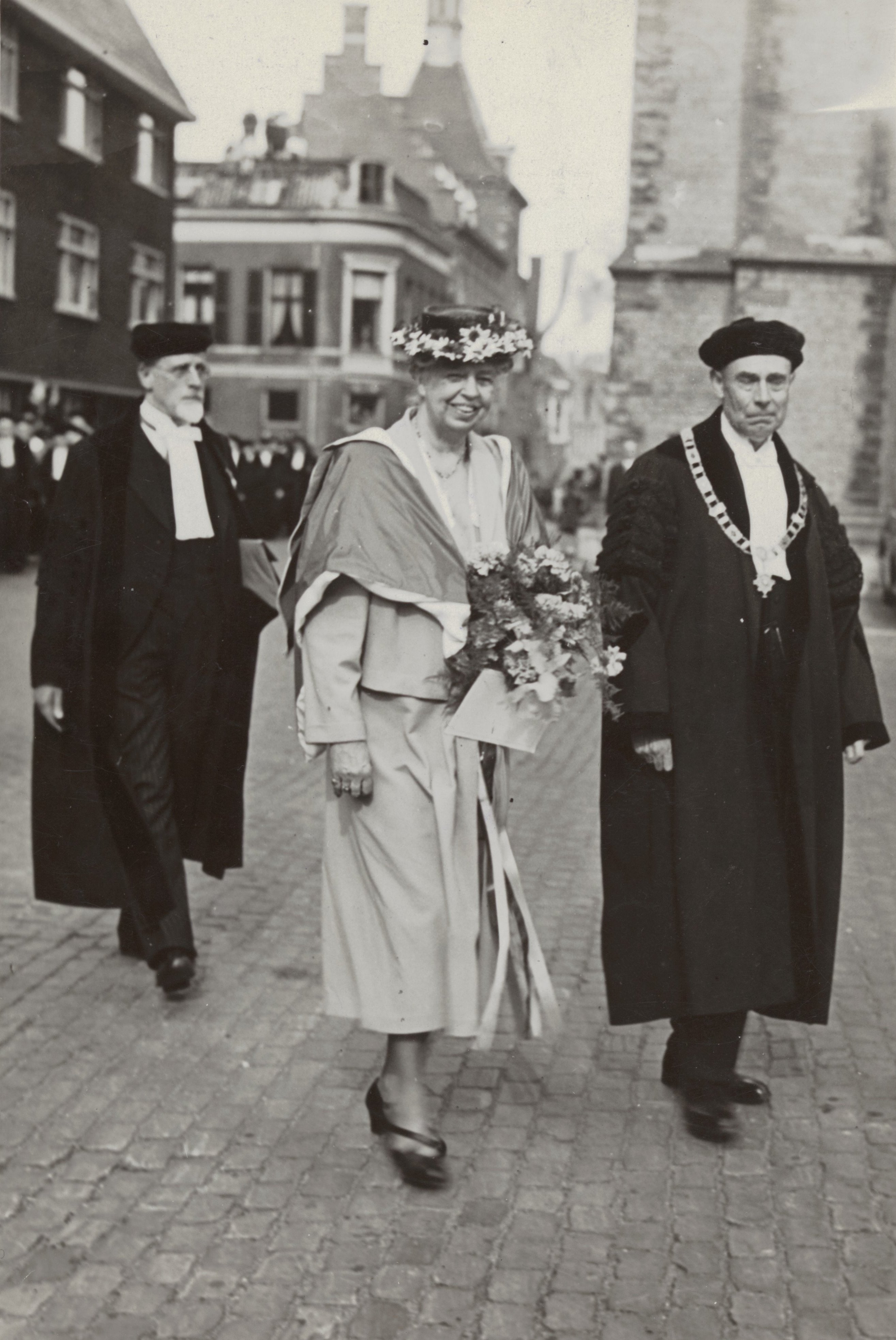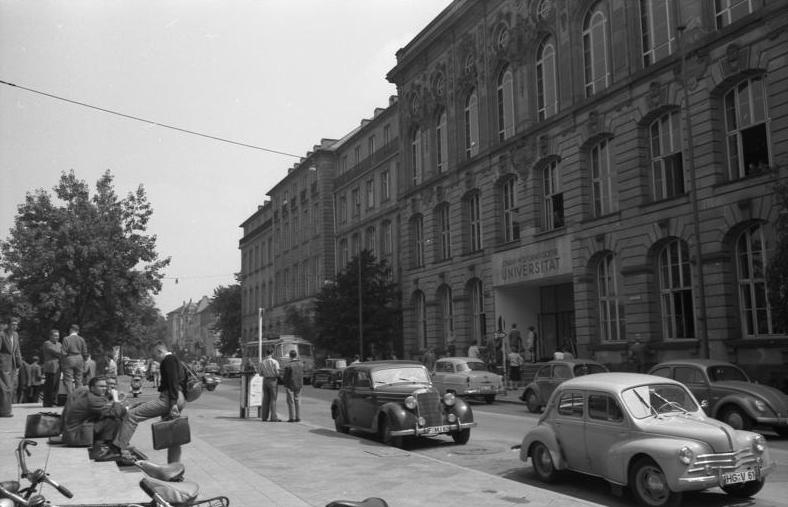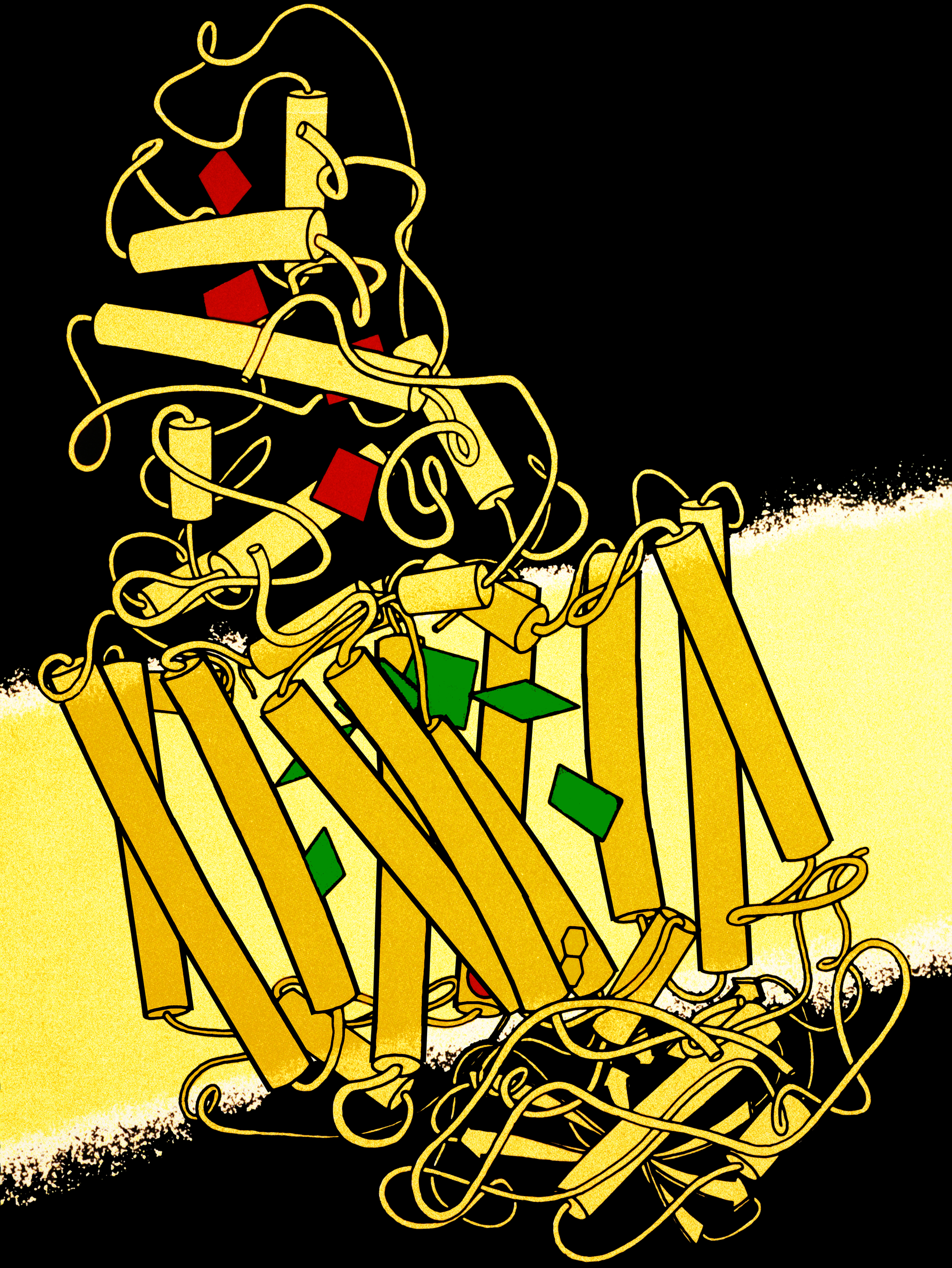|
Hartmut Michel
Hartmut Michel (; born 18 July 1948) is a German biochemist, who received the 1988 Nobel Prize in Chemistry for determination of the first crystal structure of an integral membrane protein, a membrane-bound complex of proteins and co-factors that is essential to photosynthesis. Education and early life He was born on 18 July 1948 in Ludwigsburg. After compulsory military service, he studied biochemistry at the University of Tübingen, working for his final year at Dieter Oesterhelt's laboratory on ATPase activity of halobacteria. Career and research Hartmut later worked on the crystallisation of membrane proteins - essential for their structure elucidation by X-ray crystallography. He received the Nobel Prize jointly with Johann Deisenhofer and Robert Huber in 1988. Together with Michel and Huber, Deisenhofer determined the three-dimensional structure of a protein complex found in certain photosynthetic bacteria. This membrane protein complex, called a photosynthetic react ... [...More Info...] [...Related Items...] OR: [Wikipedia] [Google] [Baidu] |
Ludwigsburg
Ludwigsburg (; Swabian: ''Ludisburg'') is a city in Baden-Württemberg, Germany, about north of Stuttgart city centre, near the river Neckar. It is the largest and primary city of the Ludwigsburg district with about 88,000 inhabitants. It is situated within the '' Stuttgart Region'', and the district is part of the administrative region (''Regierungsbezirk'') of Stuttgart. History The middle of Neckarland, where Ludwigsburg lies, was settled in the Stone and Bronze Ages. Numerous archaeological sites from the Hallstatt period remain in the city and surrounding area. Towards the end of the 1st century, the area was occupied by the Romans. They pushed the Limes further to the east around 150 and controlled the region until 260, when the Alamanni occupied the Neckarland. Evidence of the Alamanni settlement can be found in grave sites in the city today. The origins of Ludwigsburg date from the beginning of the 18th century (1718–1723) when the largest baroque castle i ... [...More Info...] [...Related Items...] OR: [Wikipedia] [Google] [Baidu] |
Halobacteria
Haloarchaea (halophilic archaea, halophilic archaebacteria, halobacteria) are a class of the Euryarchaeota, found in water saturated or nearly saturated with salt. Halobacteria are now recognized as archaea rather than bacteria and are one of the largest groups. The name 'halobacteria' was assigned to this group of organisms before the existence of the domain Archaea was realized, and while valid according to taxonomic rules, should be updated. Halophilic archaea are generally referred to as haloarchaea to distinguish them from halophilic bacteria. These microorganisms are among the halophile organisms, that they require high salt concentrations to grow, with most species requiring more than 2.0M NaCl for growth and survival. They are a distinct evolutionary branch of the Archaea distinguished by the possession of ether-linked lipids and the absence of murein in their cell walls. Haloarchaea can grow aerobically or anaerobically. Parts of the membranes of haloarchaea are purpl ... [...More Info...] [...Related Items...] OR: [Wikipedia] [Google] [Baidu] |
Royal Netherlands Academy Of Arts And Sciences
The Royal Netherlands Academy of Arts and Sciences ( nl, Koninklijke Nederlandse Akademie van Wetenschappen, abbreviated: KNAW) is an organization dedicated to the advancement of science and literature in the Netherlands. The academy is housed in the Trippenhuis in Amsterdam. In addition to various advisory and administrative functions it operates a number of research institutes and awards many prizes, including the Lorentz Medal in theoretical physics, the Dr Hendrik Muller Prize for Behavioural and Social Science and the Heineken Prizes. Main functions The academy advises the Dutch government on scientific matters. While its advice often pertains to genuine scientific concerns, it also counsels the government on such topics as policy on careers for researchers or the Netherlands' contribution to major international projects. The academy offers solicited and unsolicited advice to parliament, ministries, universities and research institutes, funding agencies and internationa ... [...More Info...] [...Related Items...] OR: [Wikipedia] [Google] [Baidu] |
German Academy Of Sciences Leopoldina
The German National Academy of Sciences Leopoldina (german: Deutsche Akademie der Naturforscher Leopoldina – Nationale Akademie der Wissenschaften), short Leopoldina, is the national academy of Germany, and is located in Halle (Saale). Founded on January 1, 1652, based on academic models in Italy, it was originally named the ''Academia Naturae Curiosorum'' until 1687 when Emperor Leopold I raised it to an academy and named it after himself. It was since known under the German name ''Deutsche Akademie der Naturforscher Leopoldina'' until 2007, when it was declared to be Germany's National Academy of Sciences. History ' The Leopoldina was founded in the imperial city of Schweinfurt on 1 January 1652 under the Latin name sometimes translated into English as "Academy of the Curious as to Nature." It was founded by four local physicians- Johann Laurentius Bausch, the first president of the society, Johann Michael Fehr, Georg Balthasar Metzger, and Georg Balthasar Wohlfarth; and ... [...More Info...] [...Related Items...] OR: [Wikipedia] [Google] [Baidu] |
Utrecht University
Utrecht University (UU; nl, Universiteit Utrecht, formerly ''Rijksuniversiteit Utrecht'') is a public research university in Utrecht, Netherlands. Established , it is one of the oldest universities in the Netherlands. In 2018, it had an enrollment of 31,801 students, and employed 7,191 faculty and staff. In 2018, 525 PhD degrees were awarded and 6,948 scientific articles were published. The 2018 budget of the university was €857 million. Utrecht University counts a number of distinguished scholars among its alumni and faculty, including 12 Nobel Prize laureates and 13 Spinoza Prize laureates. Utrecht University has been placed consistently in the top 100 universities in the world by prominent international ranking tables. The university is ranked as the best university in the Netherlands by the Shanghai Ranking of World Universities 2022, ranked 14th in Europe and 54th in the world. The university's motto is "Sol Iustitiae Illustra Nos", which means ''May the Sun of Righteous ... [...More Info...] [...Related Items...] OR: [Wikipedia] [Google] [Baidu] |
Bijvoet Center For Biomolecular Research
The Bijvoet Centre for Biomolecular Research is a research institute at Utrecht University. The Bijvoet Centre performs research on the relation between the structure and function of biomolecules, including proteins and lipids, which play a role in biological processes such as regulation, interaction and recognition. The Bijvoet Centre houses advanced infrastructures for the analysis of proteins and other biomolecules using NMR, X-ray crystallography, electron microscopy and mass spectrometry. The institute is named after famous Dutch chemist Johannes Martin Bijvoet, who worked at Utrecht University. History Utrecht University and the Netherlands Foundation for Chemical Research (SON, which later became the Chemical Sciences division of NWO, the Netherlands Organisation for Scientific Research) founded the Bijvoet Centre for Biomolecular Research as a joint research institute on March 25, 1988. The goal was to create a centre for research and expertise in structural biology with ... [...More Info...] [...Related Items...] OR: [Wikipedia] [Google] [Baidu] |
Deutsche Forschungsgemeinschaft
The German Research Foundation (german: Deutsche Forschungsgemeinschaft ; DFG ) is a German research funding organization, which functions as a self-governing institution for the promotion of science and research in the Federal Republic of Germany. In 2019, the DFG had a funding budget of €3.3 billion. Function The DFG supports research in science, engineering, and the humanities through a variety of grant programmes, research prizes, and by funding infrastructure. The self-governed organization is based in Bonn and financed by the German states and the federal government of Germany. As of 2017, the organization consists of approximately 100 research universities and other research institutions. The DFG endows various research prizes, including the Leibniz Prize. The Polish-German science award Copernicus Award, Copernicus is offered jointly with the Foundation for Polish Science. According to a 2017 article in ''The Guardian'', the DFG has announced it will publish its re ... [...More Info...] [...Related Items...] OR: [Wikipedia] [Google] [Baidu] |
Goethe University Frankfurt
Goethe University (german: link=no, Johann Wolfgang Goethe-Universität Frankfurt am Main) is a university located in Frankfurt am Main, Germany. It was founded in 1914 as a citizens' university, which means it was founded and funded by the wealthy and active liberal citizenry of Frankfurt. The original name was Universität Frankfurt am Main. In 1932, the university's name was extended in honour of one of the most famous native sons of Frankfurt, the poet, philosopher and writer/dramatist Johann Wolfgang von Goethe. The university currently has around 45,000 students, distributed across four major campuses within the city. The university celebrated its 100th anniversary in 2014. The first female president of the university, Birgitta Wolff, was sworn into office in 2015, and was succeeded by Enrico Schleiff in 2021. 20 Nobel Prize winners have been affiliated with the university, including Max von Laue and Max Born. The university is also affiliated with 18 winners of the Gott ... [...More Info...] [...Related Items...] OR: [Wikipedia] [Google] [Baidu] |
Frankfurt
Frankfurt, officially Frankfurt am Main (; Hessian: , "Frank ford on the Main"), is the most populous city in the German state of Hesse. Its 791,000 inhabitants as of 2022 make it the fifth-most populous city in Germany. Located on its namesake Main River, it forms a continuous conurbation with the neighboring city of Offenbach am Main and its urban area has a population of over 2.3 million. The city is the heart of the larger Rhine-Main metropolitan region, which has a population of more than 5.6 million and is Germany's second-largest metropolitan region after the Rhine-Ruhr region. Frankfurt's central business district, the Bankenviertel, lies about northwest of the geographic center of the EU at Gadheim, Lower Franconia. Like France and Franconia, the city is named after the Franks. Frankfurt is the largest city in the Rhine Franconian dialect area. Frankfurt was a city state, the Free City of Frankfurt, for nearly five centuries, and was one of the most import ... [...More Info...] [...Related Items...] OR: [Wikipedia] [Google] [Baidu] |
Photosynthetic Reaction Center
A photosynthetic reaction center is a complex of several proteins, pigments and other co-factors that together execute the primary energy conversion reactions of photosynthesis. Molecular excitations, either originating directly from sunlight or transferred as excitation energy via light-harvesting antenna systems, give rise to electron transfer reactions along the path of a series of protein-bound co-factors. These co-factors are light-absorbing molecules (also named chromophores or pigments) such as chlorophyll and pheophytin, as well as quinones. The energy of the photon is used to excite an electron of a pigment. The free energy created is then used, via a chain of nearby electron acceptors, for a transfer of hydrogen atoms (as protons and electrons) from H2O or hydrogen sulfide towards carbon dioxide, eventually producing glucose. These electron transfer steps ultimately result in the conversion of the energy of photons to chemical energy. Transforming light energy into cha ... [...More Info...] [...Related Items...] OR: [Wikipedia] [Google] [Baidu] |
Robert Huber
Robert Huber (; born 20 February 1937) is a German biochemist and Nobel laureate. known for his work crystallizing an intramembrane protein important in photosynthesis and subsequently applying X-ray crystallography to elucidate the protein's structure. Education and early life He was born on 20 February 1937 in Munich where his father, Sebastian, was a bank cashier. He was educated at the Humanistisches Karls-Gymnasium from 1947 to 1956 and then studied chemistry at the Technische Hochschule, receiving his diploma in 1960. He stayed, and did research into using crystallography to elucidate the structure of organic compounds. Career In 1971 he became a director at the Max Planck Institute for Biochemistry where his team developed methods for the crystallography of proteins. In 1988 he received the Nobel Prize for Chemistry jointly with Johann Deisenhofer and Hartmut Michel. The trio were recognized for their work in first crystallizing an intramembrane protein important in ph ... [...More Info...] [...Related Items...] OR: [Wikipedia] [Google] [Baidu] |




